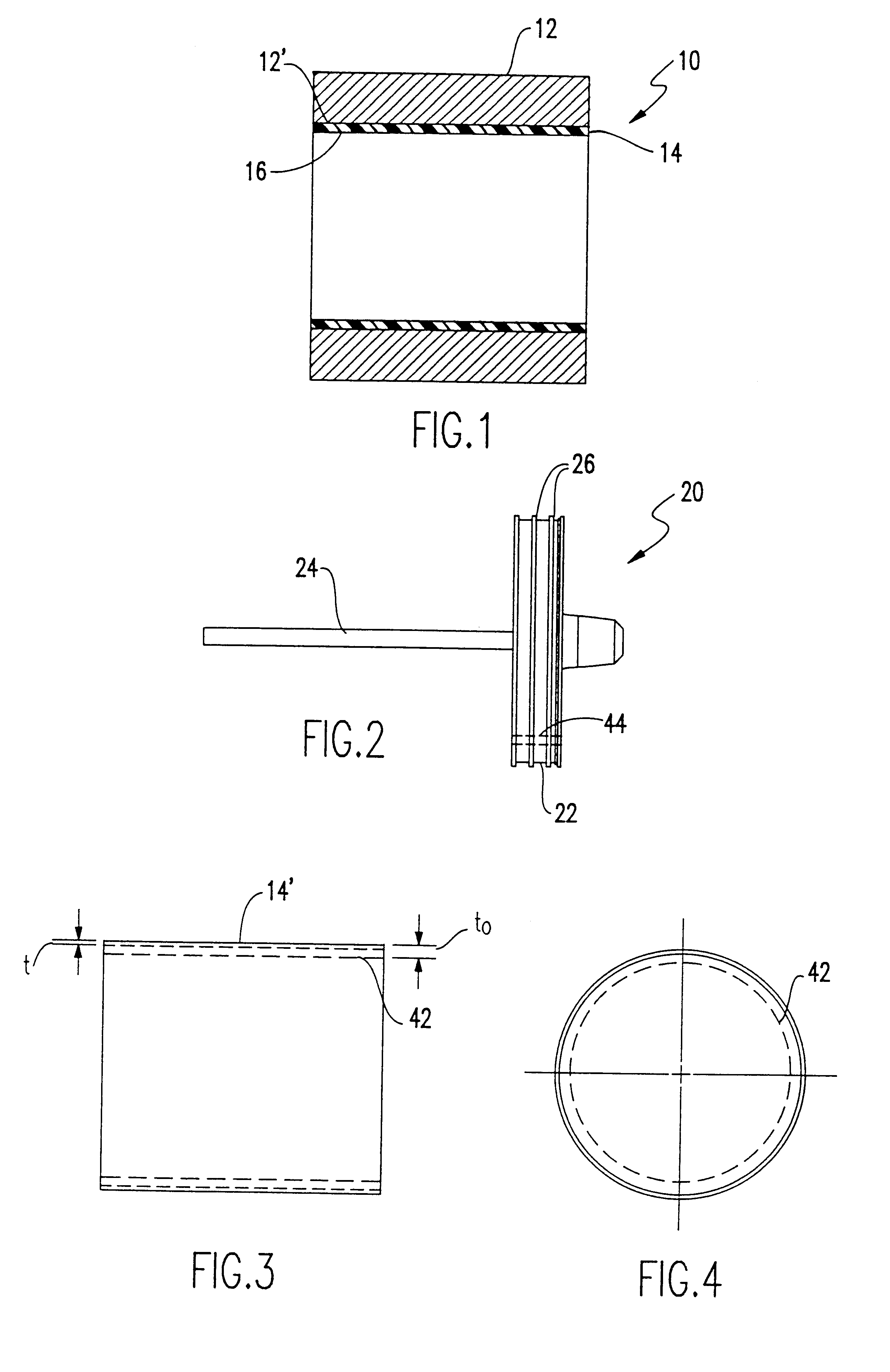Power cylinder non-metallic liner seal assembly
a non-metallic liner and assembly technology, applied in mechanical equipment, transportation and packaging, other domestic objects, etc., can solve the problems of imposing extreme hydrostatic pressures against which pneumatic or hydraulic pressure must work, affecting the work efficiency of the cylinder, and affecting the operation of the cylinder
- Summary
- Abstract
- Description
- Claims
- Application Information
AI Technical Summary
Benefits of technology
Problems solved by technology
Method used
Image
Examples
Embodiment Construction
Referring now to the drawings, and more particularly to FIG. 1, there is shown a cross-sectional view of a cylinder assembly 10 including an outer cylinder 12 and liner 14 in accordance with the invention. Outer cylinder 12 is preferably cast of copper / nickel (CuNi) alloy and the inner bore 12' machined to a diameter slightly (preferably somewhat less than about one-eighth inch) larger than the desired final diameter of the inner bore 16 of the assembly 10. The outer surface of the outer cylinder 12 is not critical to the practice of the invention and various features such as mounting bosses can be integrally formed therewith. The thickness of the outer cylinder 12 is similarly not critical to the invention and can be sized to withstand anticipated pressures for a particular application by those skilled in the art.
It is to be understood that the proportions of FIG. 1, as shown, including a length of about twelve inches and an inner bore diameter of about nine inches, reflect those o...
PUM
| Property | Measurement | Unit |
|---|---|---|
| temperatures | aaaaa | aaaaa |
| velocity | aaaaa | aaaaa |
| thickness | aaaaa | aaaaa |
Abstract
Description
Claims
Application Information
 Login to View More
Login to View More - R&D
- Intellectual Property
- Life Sciences
- Materials
- Tech Scout
- Unparalleled Data Quality
- Higher Quality Content
- 60% Fewer Hallucinations
Browse by: Latest US Patents, China's latest patents, Technical Efficacy Thesaurus, Application Domain, Technology Topic, Popular Technical Reports.
© 2025 PatSnap. All rights reserved.Legal|Privacy policy|Modern Slavery Act Transparency Statement|Sitemap|About US| Contact US: help@patsnap.com


